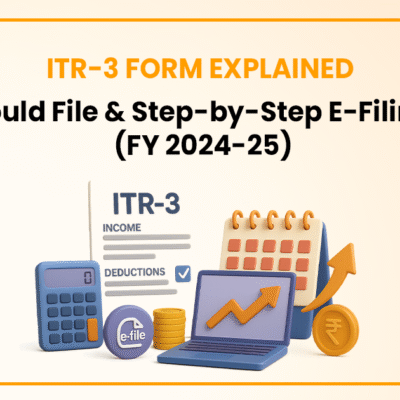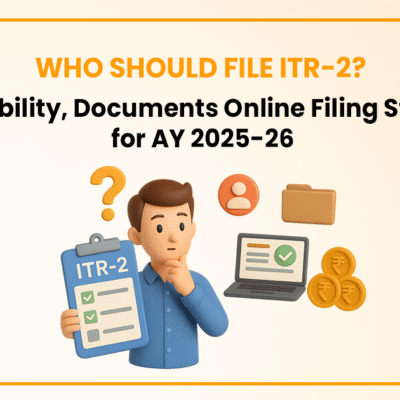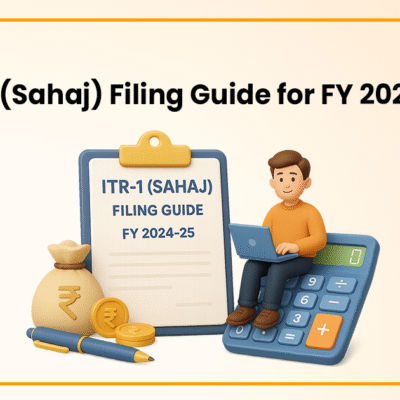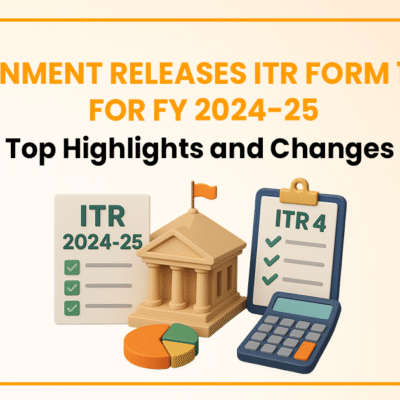
Section 361 of the Companies Act, 2013 specifies a short process for the dissolution of corporations. The Central Government appoints an Official Liquidator to oversee the liquidation procedures. The summary procedure specifies a mechanism for winding up other than insolvency due to incapacity to pay debts. Let us briefly discuss Procedure of Modes of Winding up of a Company.
Key Abstract of Modes of Winding up of a Company
The Principles of Modern Company Law outlines A company's winding up and it is the process by which its life can be terminate. Further, its assets can be handling for the benefit of its creditors and members. An administrator will act as a liquidator, and he takes control of the firm, collects its assets, pays its obligations, and eventually distributes any excess among the members in line with their rights." During the winding up of a company, the dissolution does not occur immediately, but Bachawat J held in Pierce Leslie & Co Ltd v. Violet Ouchterlong Wapshare that "winding up precedes dissolution." "Winding Up" is a provision in Chapter XX of the Companies Act, 2013, ranging from Section 270 to Section 365.
Winding up of a company
The liquidation of the Company's assets, which are collected and sold in order to satisfy the obligations accrued, is referred to as winding up. When a corporation is wind up, the debts, expenditures, and charges are first paid off and dispersed among the shareholders. When a company is subject to liquidation, it dissolves officially and ceases to exist.
Winding up is the legal process of closing down a firm and ceasing all operations. After the winding up of Company, the Company's existence ends, and the assets are subject to supervision to ensure that the stakeholders' interests are not jeopardised.
A Private Limited Company is an artificial judicial entity that requires numerous compliances. If the company fails to maintain these compliances, fines and penalties may be impose against them, as well as disqualification of the Directors from subsequent incorporation of a Company. It is usually preferable to wind up a firm that has become dormant or has no transactions. The Company's shareholders have the authority to initiate the company's dissolution at any moment. If there are secured or unsecured creditors or workers on the books, all outstanding debts must be paid. After clearing the debts, all of the company's bank accounts must be closed. In the event that the company is dissolved, the GST registration must likewise be relinquished.
Once all registrations have been submitted, a winding-up petition can be filed with the Ministry of Corporate Affairs.
Procedure of Modes of Winding up of a company- Modes
According to Section 270 of the Companies Act, 2013, a company can be wind up in two ways. They are:
- Compulsory Winding up of Company by Tribunal
- Voluntary Winding up of Company
Compulsory Winding up of Company by Tribunal
According to Section 271 of the Companies Act, a Tribunal may issue an order to wind up a company in the following circumstances, as detailed in Section 271(1) of the Companies Act, 2013.
- Sick Company
- Special Proposal
- Acts against the State
- Fraudulent Conduct of Business
- Failure to file financial statements with the Registrar
- It is just and equitable to wind up.
Let us discuss them one by one in detail.
- Sick Company: If the firm is in a position where creditors have a dominating position, with debt dues, the Committee of Creditors shall appoint an administrator to hold up the winding up of the Company, in accordance with the Tribunal's ruling. This occurs when the company is in a sick state, i.e. the firm is unable to pay its obligations and it is not feasible to resuscitate and rehabilitate such opinion and order that the Company may be wind up.
- Special Resolution: If the Company has agreed, by a special resolution that it will wind up by the Tribunal then the said winding up is at the discretion of the Tribunal. This exempts the Tribunal's ability to wind up a corporation if it is contrary to the public interest or the company's interest.
- Acts against the State: If the Company commits an act that is detrimental to India's sovereignty and integrity, the security of the State, cordial relations with other states, public order, decency, or morals, the Tribunal may ask company to wind up the company.
- Fraudulent Conduct of Business: If the Tribunal believes that the Company's affairs have taken place by way of fraud or that the reason for forming the company is for fraudulent or unlawful purpose, the Tribunal has the ultimate discretion to wind up the company only after receiving an application from the Registrar of Companies or any other person authorised by the Central Government.
- Failure to file financial statements with the Registrar: If the Company has failed to file its financial statements or annual reports with the Registrar for the last five consecutive fiscal years, as required by Section 271(1) (f) of the Act.
- It is just and equitable to wind up: Section 271(1) (g) of the Act states that if the Tribunal believes that it is just and equitable that the company be wind up, it must consider the interests of the company, its employees, creditors, shareholders, and the general public interest, as well as all other remedies to resolve the circumstance that led to the Tribunal's decision to wind up. Under this premise, winding up the firm necessitates a strong ground to liquidate that company.
Procedure of Modes of Winding up of a Company-Compulsory Winding up of Company by Tribunal
A petition is use to make an application to the Tribunal in the winding up of a company under Section 272 of the statute.
The following individuals are entitled to file this petition:
- The Company;
- Any creditor or creditors, including any contingent or potential creditors;
- Any Contributors to that company;
- The Registrar; and
- Any person authorised by the Central Government to do so.
Procedure
The following is the procedure for compulsory winding up of company by tribunal:
- Appointment of a Liquidator to the Company under Section 275 to examine the Company's debts and credits in order to verify the Company's eligibility for forced winding up by the Tribunal.
- Following the appointment, Liquidators as per section 281 of the Act to make a report to the Tribunal.
- The Tribunal issues orders to the liquidators in dissolving the Company under Section 282 of the Act. And according to which, the company's property undergo shift into custody in order to satisfy the creditors and contributors first.
- Finally, the Court issues the order for dissolution under Section 302 of the Act, after carefully reviewing the audits and reports provided by the liquidator to the Court in the interest of resolving the obligations owed to creditors and other contributors.
Voluntary Winding up of Company
Section 304 of the Companies Act, 2013, specifies two statutory conditions in which a company may be voluntarily wind up. They are;
- If the company's general meeting approves a resolution requiring the company to be wind up voluntarily as a consequence of the expiration of the time for its duration, if any, as per its articles, or the occurrence of any event for which the articles prescribe that the company may be dissolve; or
- If the board of directors approves a special resolution requesting that the firm is wind up voluntarily.
Procedure of Modes of Winding up of a Company- Voluntary Process
The following are the procedure for winding up of company voluntarily:
- Convene a board meeting with the directors and approve a resolution with a statement by the directors that they have inquired into the accounts of the business and that the company has no obligations or that the company will pay from the proceeds of the assets sold in the voluntary winding up of the company.
- Notices calling for the general meeting of the Company proposing the resolutions should be in writing. In addition with a relevant explanatory statement.
- Pass the ordinary resolution for the Company's winding up by a simple majority in the general meeting; or the exceptional resolution by a 3/4 majority. The Company's liquidation will begin on the date the resolution.
- A creditors' meeting should take place on the same day or the following day after the resolution to wind up passes. If two-thirds of the creditors agree that winding up the company is in the best interests of all stakeholders, the company can be wind up voluntarily.
- A notification for appointment of liquidator must be file with the registrar within 10 days. After passing the resolution for company winding up.
- Certified copies of the ordinary or extraordinary resolutions passed at the Company's general meeting for winding up must be sent within 30 days after the meeting.
- The company's affairs must be subject to wind up, and the liquidators' account of the Winding up account should be prepare and audit.
- When the company's affairs have been entirely wound up and it is going to be dissolved; a specific resolution should be enacted to dispose of the company's books and documents.
- Within two weeks following the Company's general meeting; applicant may file a copy of the accounts and an application to the tribunal for an order of dissolution.
- Within 60 days after receiving the application, the tribunal must issue an order dissolving the firm.
- The company liquidator must file the copy of order with the registrar.
- After obtaining a copy of the Tribunal's ruling, the registrar will issue a notice in the official gazette. This takes place to indicate the status of Company.
Endnote
A Private Limited Company is a legal organisation which acts in accordance with the Companies Act. As a result, a corporation must maintain frequent compliances throughout its life cycle. The process of winding up is for a company that is no longer active and wishes to avoid compliance obligations. In addition, a company can be down by filing an application with the Ministry of Corporate Finance in 3 to 6 months.
Neelansh Gupta is a dedicated Lawyer and professional having flair for reading & writing to keep himself updated with the latest economical developments. In a short span of 2 years as a professional he has worked on projects related to Drafting, IPR & Corporate laws which have given him diversity in work and a chance to blend his subject knowledge with its real time implementation, thus enhancing his skills.
Categories
- Agreement Drafting (23)
- Annual Compliance (13)
- Change in Business (37)
- Company Law (150)
- Compliance (90)
- Digital Banking (3)
- Drug License (4)
- FEMA (17)
- Finance Company (42)
- Foreign Taxation (9)
- FSSAI License/Registration (15)
- GST (124)
- Hallmark Registration (1)
- Income Tax (214)
- Latest News (36)
- Miscellaneous (170)
- NBFC Registration (8)
- NGO (18)
- SEBI Registration (6)
- Section 8 Company (10)
- Start and manage a business (27)
- Startup/ Registration (134)
- Trademark Registration/IPR (48)
Recent Posts
- Major Upgrade: Breaking Down GST 2.0 September 15, 2025
- New Income Tax Bill 2025 August 27, 2025
- ITR-3 Form Explained: Who Should File & Step-by-Step E-Filing Guide (FY 2024-25) June 25, 2025
All Website Tags
About us
LegalWindow.in is a professional technology driven platform of multidisciplined experts like CA/CS/Lawyers spanning with an aim to provide concrete solution to individuals, start-ups and other business organisation by maximising their growth at an affordable cost.









